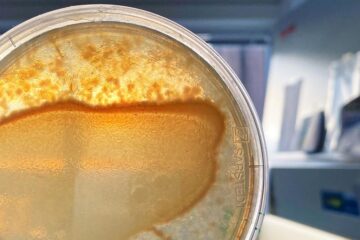Method to Install Offshore Foundations

<strong>Background</strong><br>
It is still a main problem in the offshore industry to install foundations that satisfy the acoustic limiting values set by the Federal Maritime and Hydro-graphic Agency (BSH). Current methods mainly focus on passive acoustic protection during ramming that do minimize the acoustic emissions but how-ever cannot reliably observe the acoustic limiting values. <br><br> Thus there is still a need for installation methods that are easy to handle, economic and fulfill the requirements made by the federal institutions. <br><br> <strong>Technology</strong><br> The currently developed installation method for offshore foundations can overcome the above mentioned problems from the state of the art and easily satisfy the acoustic limiting values set by BSH. <br><br> The main advantage of this method is that ramming – the main noise produc-ing installation step – is no longer necessary. With the proposed method the foundations are installed by flushing away the seabed below the foundation in a controlled way and use it for further stabilization of the foundation.<br><br> <strong>Benefits</strong> <ul> <li>Clearly lower acoustic emissions and thus satisfying the limiting values from the BSH</li> <li>Cheaper and faster than current installation methods </li> <li>Use of ferroconcrete as foundation material -> very well corrosion protection</li> <li>Use of standardized components, no customized products necessary</li> <li>Easy transportation of the foundation to the place of installation </li> </ul> <p><strong>IP Rights</strong><br> German Patent application filed in April 2012 <br> <br> <strong>Patent Owner</strong><br> Technische Universität Berlin
Weitere Informationen: PDF
ipal GmbH
Tel.: +49 (0)30/2125-4820
Ansprechpartner
Dr. Dirk Dantz
Media Contact
Alle Nachrichten aus der Kategorie: Technologieangebote
Neueste Beiträge

Das Mikrobiom verändert sich dynamisch und begünstigt wichtige Funktionen für den Wirt
Ein interdisziplinäres Forschungsteam des Kieler SFB 1182 untersucht am Beispiel von Fadenwürmern, welche Prozesse die Zusammensetzung des Mikrobioms in Wirtslebewesen steuern. Alle vielzelligen Lebewesen – von den einfachsten tierischen und…

Wasser im Boden – genaue Daten für Landwirtschaft und Klimaforschung
Die PTB präsentiert auf der Woche der Umwelt, wie sich die Bodenfeuchte mithilfe von Neutronenstrahlung messen lässt. Die Bodenfeuchte hat nicht nur Auswirkungen auf die Landwirtschaft, sondern ist als Teil…

Bioreaktor- und Kryotechnologien für bessere Wirkstofftests mit humanen Zellkulturen
Medizinische Wirkstoffforschung… Viele Neuentwicklungen von medizinischen Wirkstoffen scheitern, weil trotz erfolgreicher Labortests mit Zellkulturen starke Nebenwirkungen bei Probanden auftreten. Dies kann passieren, wenn zum Beispiel die verwendeten Zellen aus tierischem…

















